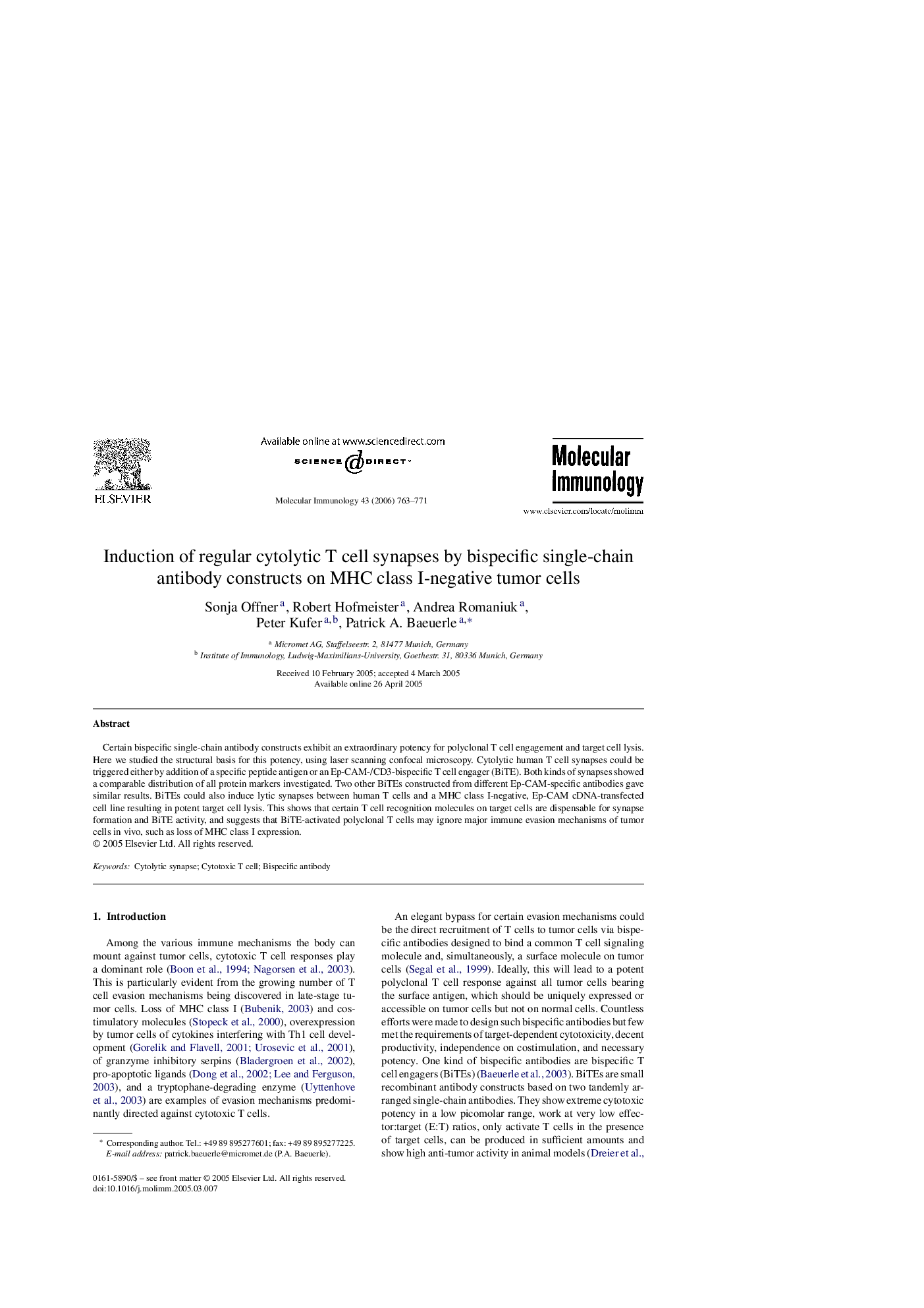| Article ID | Journal | Published Year | Pages | File Type |
|---|---|---|---|---|
| 2833600 | Molecular Immunology | 2006 | 9 Pages |
Certain bispecific single-chain antibody constructs exhibit an extraordinary potency for polyclonal T cell engagement and target cell lysis. Here we studied the structural basis for this potency, using laser scanning confocal microscopy. Cytolytic human T cell synapses could be triggered either by addition of a specific peptide antigen or an Ep-CAM-/CD3-bispecific T cell engager (BiTE). Both kinds of synapses showed a comparable distribution of all protein markers investigated. Two other BiTEs constructed from different Ep-CAM-specific antibodies gave similar results. BiTEs could also induce lytic synapses between human T cells and a MHC class I-negative, Ep-CAM cDNA-transfected cell line resulting in potent target cell lysis. This shows that certain T cell recognition molecules on target cells are dispensable for synapse formation and BiTE activity, and suggests that BiTE-activated polyclonal T cells may ignore major immune evasion mechanisms of tumor cells in vivo, such as loss of MHC class I expression.
